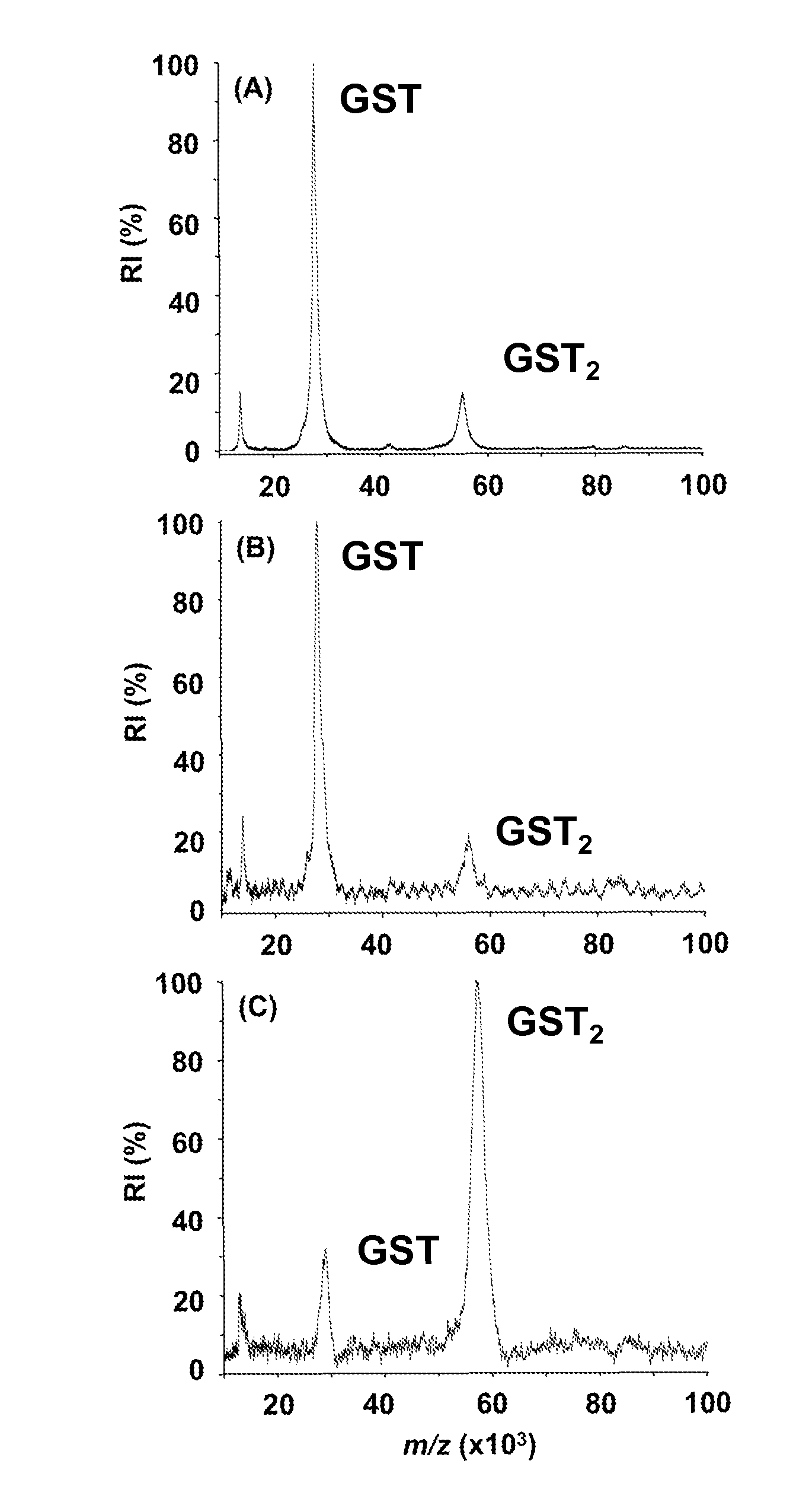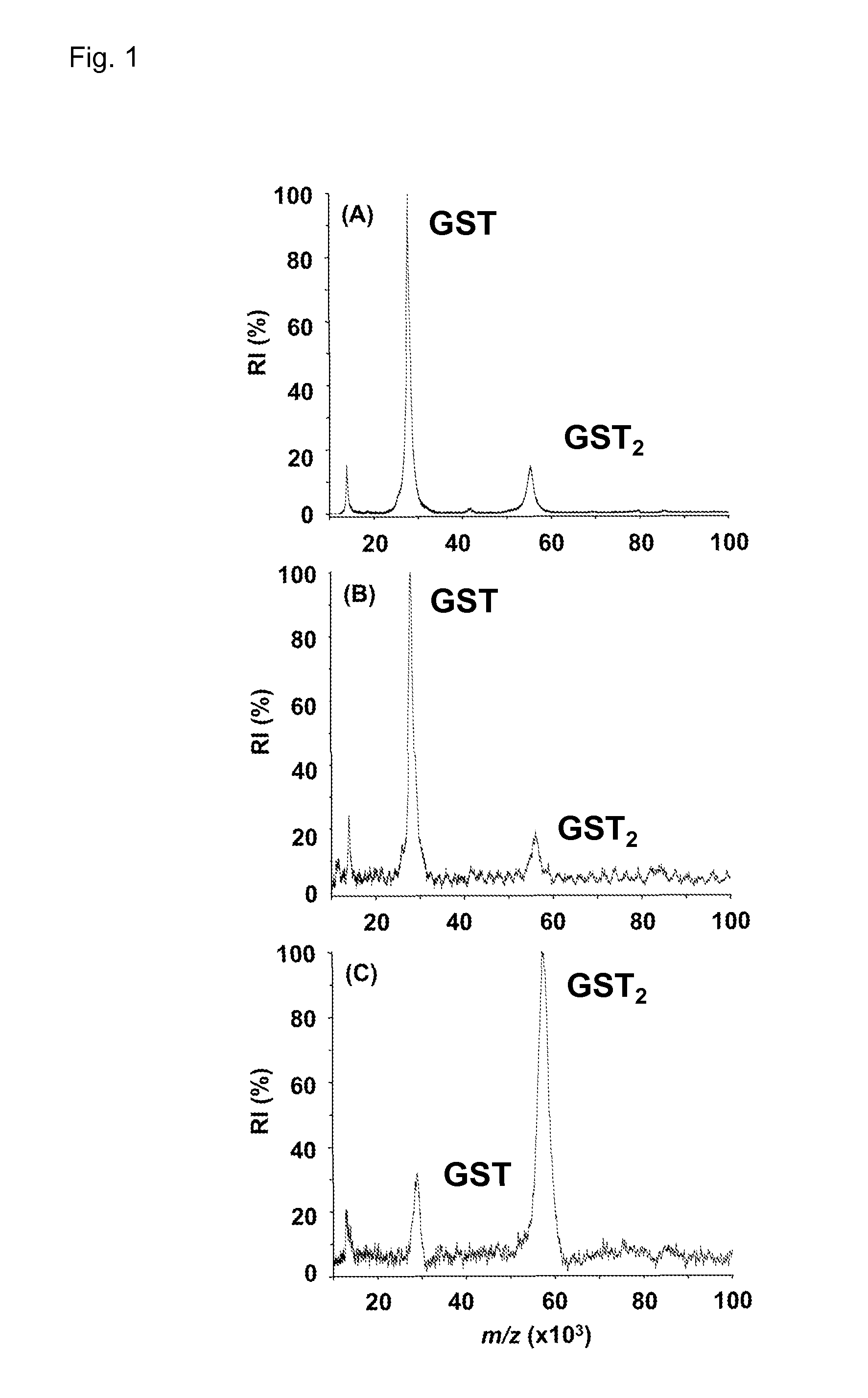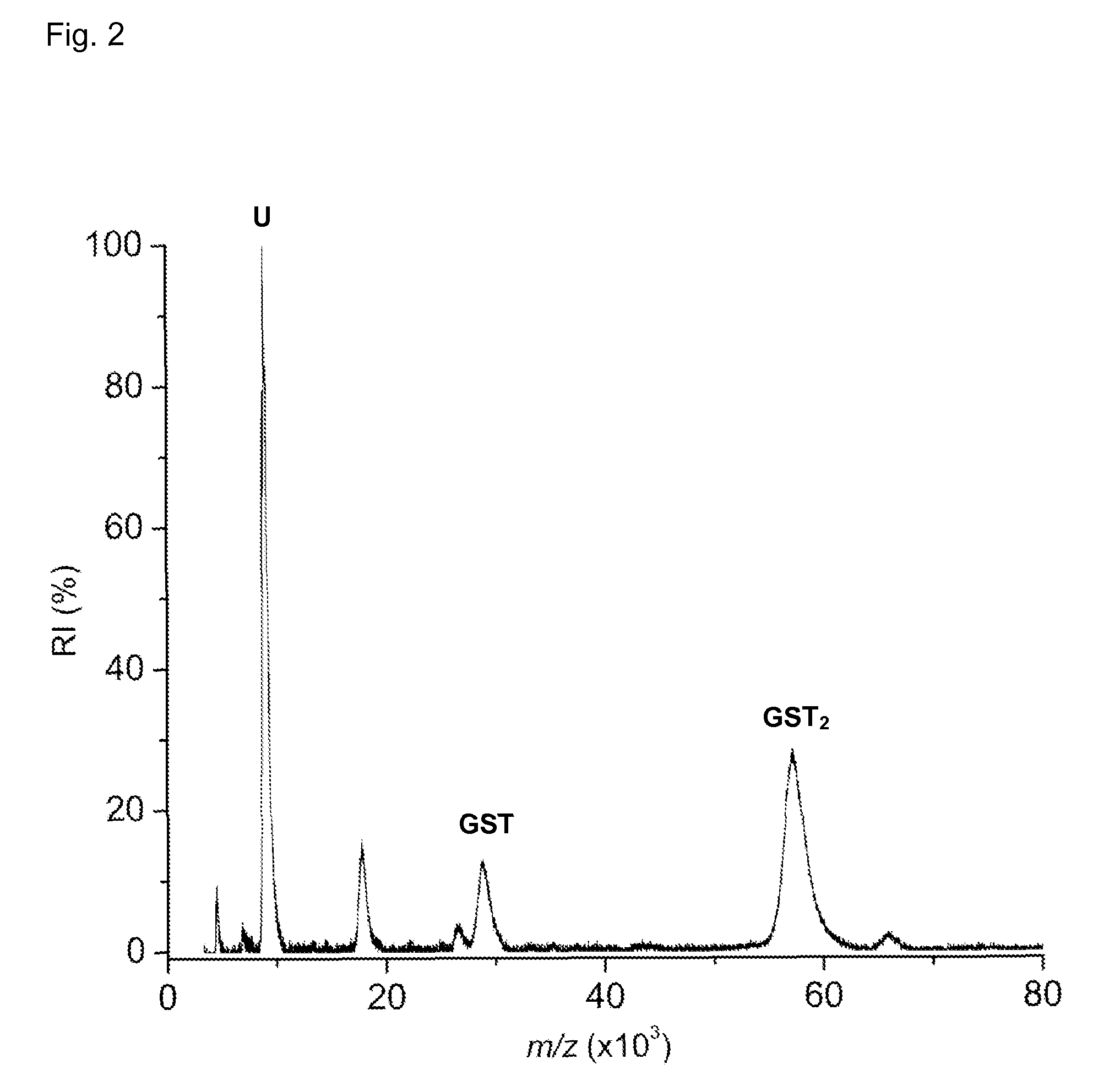Cross-linking reagents for molecular interactions analysis
a technology of cross-linking reagents and molecular interactions, which is applied in the field of cross-linking reagents for molecular interactions analysis, can solve the problems of artifactual concerns, use of state-of-the-art cross-linkers, and drawbacks of chemical reagents, and achieve reliable characterization of their nature and increase efficiency and kinetic properties
- Summary
- Abstract
- Description
- Claims
- Application Information
AI Technical Summary
Problems solved by technology
Method used
Image
Examples
example 1
1,1′-(Suberoyldioxy) bisbenzotriazole SBBT (di(1H-benzo[d][1,2,3]triazol-1-yl) octanedioate)
[0062]
[0063]The coupling between suberic chloride and 1-hydroxybenzotriazole was done in analogy to the method described for adipoyl chloride (Ueda et al., Journal of Polymer Science, Part a, Polymer Chemistry 1974, 14(11):2665-2673). A solution of 1-hydroxy-benzotriazole (1.0 g; 7 mmol) and triethylamine (1.2 mL; 9 mmol) in dry THF (5 mL) is dropwise mixed with suberic chloride (0.6 mL; 4 mmol) at 0° C. The solution is then stirred for 30 min and poured into 200 mL of H2O. The precipitate is filtered and dried.
example 2
1,1′-(Suberoyldioxy) bisazabenzotriazole SBAT (di(3H-[1,2,3]triazolo[4,5-b]pyridin-3-yl) octanedioate)
[0064]
[0065]A solution of 3H-[1,2,3]triazolo[4,5-b]pyridin-3-ol (1.08 g; 8 mmol) and of triethylamine (1.2 mL; 9 mmol) in dry THF (5 mL) is treated with suberic chloride (0.6 mL; 4 mmol) and stirred for 30 min at 0° C. The solution is poured into H2O and the precipitate filtered.
[0066]Compounds of Examples 1 and 2 are analyzed by 1H NMR, on a Varian Mercury 300 or a Varian Gemini instrument. For mass spectrometric characterization, spectra are acquired on a quadrupole time-of-flight mass spectrometer (Q-ToF ULTIMA, Waters, Manchester, UK) equipped with an automated chip-based nanoESI system (Nanomate 100, Advion Biosciences, Ithaca, N.Y., USA).
example 3
Sample Preparation
[0067]The protein complexes to be stabilized are cross-linked with an excess of the cross-linking mixture in a total volume of 10 μL. Each cross-linker is freshly solubilized in dimethyl formamide (DMF) at 2 mg / mL, and is added to an aliquot of the protein or peptide solution at a 50 fold molar excess. The sample and the cross-linker are incubated between 2 and 180 min at room temperature. After cross-linking, 1 μL of the sample containing the protein complexes is directly mixed with 1 μL of matrix solution. The matrix solution, freshly made, contains sinapic acid (10 mg / mL) in acetonitrile:water (1:1, v / v) acidified with 0.1% (v / v) trifluoroacetic acid (TFA). After mixing, 1 μL of the sample is deposited on the sample plate for MALDI-MS analysis.
[0068]The specificity of the binding between the protein complex and the cross-linker is tested by adding ubiquitin (5 μL, 30 μM) to a glutathione S-transferase (GST) solution (5 μL, 15 μM) and incubating the mixture with ...
PUM
| Property | Measurement | Unit |
|---|---|---|
| molecular weight | aaaaa | aaaaa |
| molecular weight | aaaaa | aaaaa |
| total volume | aaaaa | aaaaa |
Abstract
Description
Claims
Application Information
 Login to view more
Login to view more - R&D Engineer
- R&D Manager
- IP Professional
- Industry Leading Data Capabilities
- Powerful AI technology
- Patent DNA Extraction
Browse by: Latest US Patents, China's latest patents, Technical Efficacy Thesaurus, Application Domain, Technology Topic.
© 2024 PatSnap. All rights reserved.Legal|Privacy policy|Modern Slavery Act Transparency Statement|Sitemap



